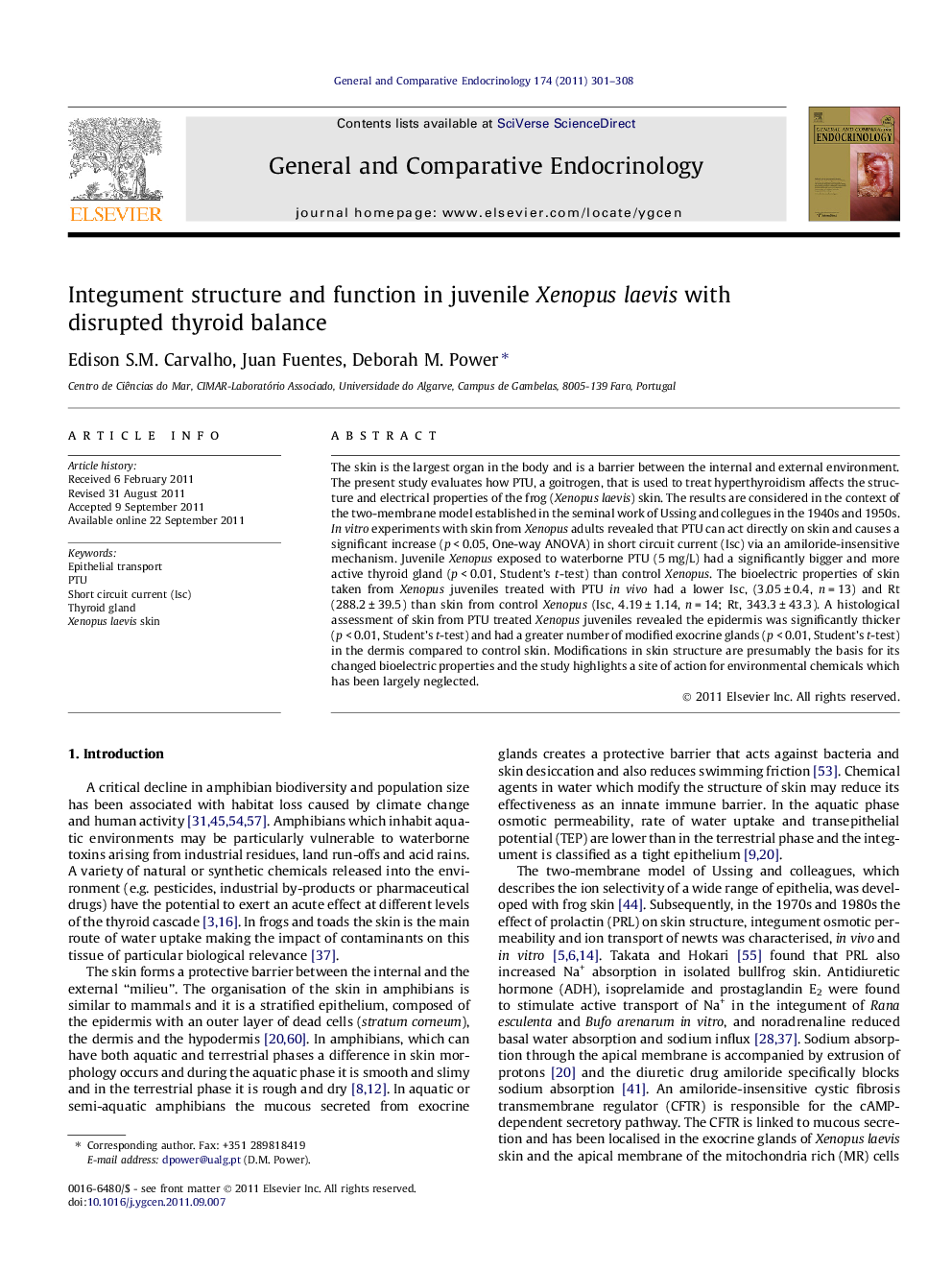| Article ID | Journal | Published Year | Pages | File Type |
|---|---|---|---|---|
| 2800804 | General and Comparative Endocrinology | 2011 | 8 Pages |
The skin is the largest organ in the body and is a barrier between the internal and external environment. The present study evaluates how PTU, a goitrogen, that is used to treat hyperthyroidism affects the structure and electrical properties of the frog (Xenopus laevis) skin. The results are considered in the context of the two-membrane model established in the seminal work of Ussing and collegues in the 1940s and 1950s. In vitro experiments with skin from Xenopus adults revealed that PTU can act directly on skin and causes a significant increase (p < 0.05, One-way ANOVA) in short circuit current (Isc) via an amiloride-insensitive mechanism. Juvenile Xenopus exposed to waterborne PTU (5 mg/L) had a significantly bigger and more active thyroid gland (p < 0.01, Student’s t-test) than control Xenopus. The bioelectric properties of skin taken from Xenopus juveniles treated with PTU in vivo had a lower Isc, (3.05 ± 0.4, n = 13) and Rt (288.2 ± 39.5) than skin from control Xenopus (Isc, 4.19 ± 1.14, n = 14; Rt, 343.3 ± 43.3). A histological assessment of skin from PTU treated Xenopus juveniles revealed the epidermis was significantly thicker (p < 0.01, Student’s t-test) and had a greater number of modified exocrine glands (p < 0.01, Student’s t-test) in the dermis compared to control skin. Modifications in skin structure are presumably the basis for its changed bioelectric properties and the study highlights a site of action for environmental chemicals which has been largely neglected.
► Waterborne PTU causes significant structural modifications in the skin. ► PTU changes the bioelectric properties of skin in vitro via an Amiloride-insensitive mechanism. ► Skin from PTU treated Xenopus has lower short circuit current (Isc) and epithelial resistance (Rt).
